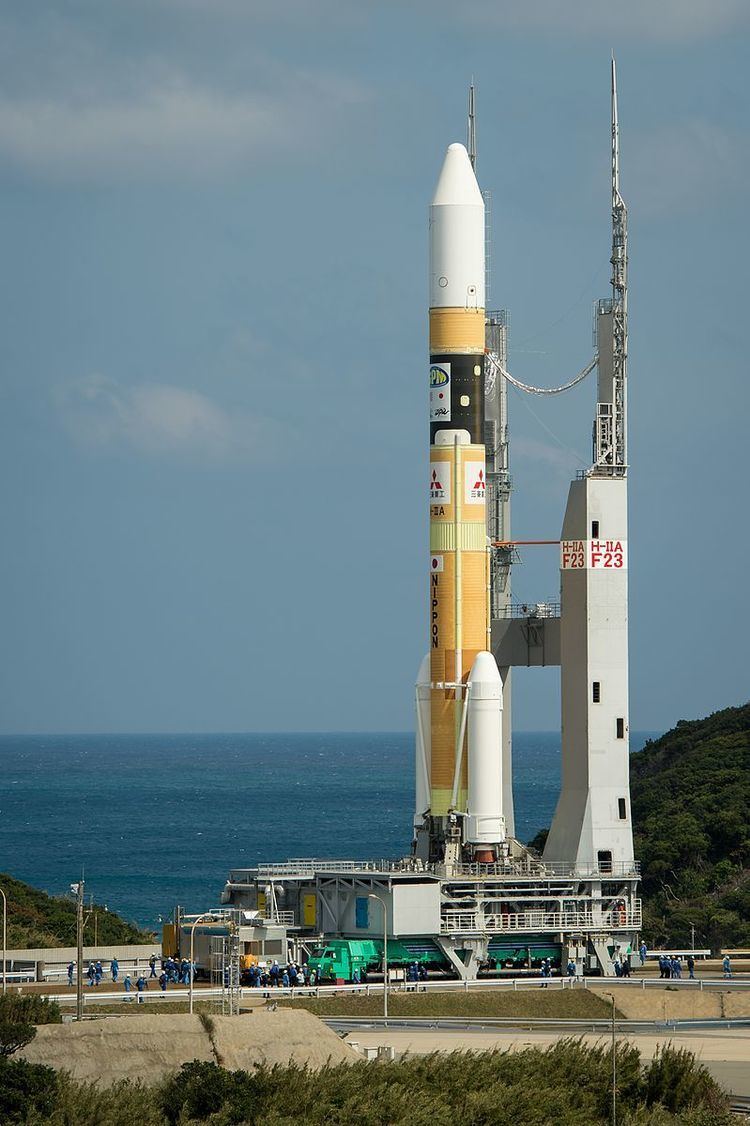Function Launch vehicle Height 53 m (173 ft) | Country of origin Japan Diameter 4 m (13.1 ft) | |
 | ||
Mass 285,000 - 445,000 kg (628,317 - 981,057 lb) | ||
H-IIA (H2A) is an active expendable launch system operated by Mitsubishi Heavy Industries (MHI) for the Japan Aerospace Exploration Agency. The liquid-fueled H-IIA rockets have been used to launch satellites into geostationary orbit, to launch a lunar orbiting spacecraft, and to launch an interplanetary space probe to Venus. Launches occur at the Tanegashima Space Center. The H-IIA first flew in 2001 and has been launched 30 times by February 2016.
Contents
Production and management of the H-IIA shifted from JAXA to MHI on April 1, 2007. Flight 13, which launched the lunar orbiter SELENE, was the first H-IIA launched after this privatization.
The H-IIA is a derivative of the earlier H-II rocket, substantially redesigned to improve reliability and minimize costs. There are currently two (formerly four) different variants of the H-IIA in active service for various purposes. A derivative design, the H-IIB, was developed in the 2000s and made its maiden flight in 2009.
Vehicle description
The launch capability of an H-IIA launch vehicle can be enhanced by adding SRB-A (solid rocket booster or SRB) and Castor 4AXL (solid strap-on booster or SSB) to its basic configuration, creating a "family". The models are indicated by three or four numbers following the prefix "H2A". The first number in the sequence indicates the number of stages; the second number of liquid rocket boosters (LRBs); the third number of SRBs; and, if present, the fourth number shows the number of SSBs. The first two figures are virtually fixed at "20", as H-IIA is always two-staged, and the plans for LRBs were cancelled and superseded by the H-IIB.
Variants
As of 2007 there are four different configurations shown in the following table.
Launch history
The first H-IIA was successfully launched on August 29, 2001, followed by a string of successes.
The sixth launch on November 29, 2003, intended to launch two IGS reconnaissance satellites, failed. JAXA announced that launches would resume in 2005, and the first successful flight took place on February 26 with the launch of MTSAT-1R.
The first launch for a mission beyond Earth orbit was on September 14, 2007 for the SELENE moon mission. The first foreign payload on the H-IIA was the Australian FedSat-1 in 2002. As of March 2015, 27 out of 28 launches were successful.
A rocket with increased launch capabilities, H-IIB, is a derivative of the H-IIA family. H-IIB uses two LE-7A engines in its first stage, as opposed to one in H-IIA. The first H-IIB was successfully launched on September 10, 2009.
For the 29th flight on November 24, 2015, an H-IIA with an upgraded second stage launched the Canadian Telstar 12V satellite, the first commercial primary payload for a Japanese launch vehicle.
